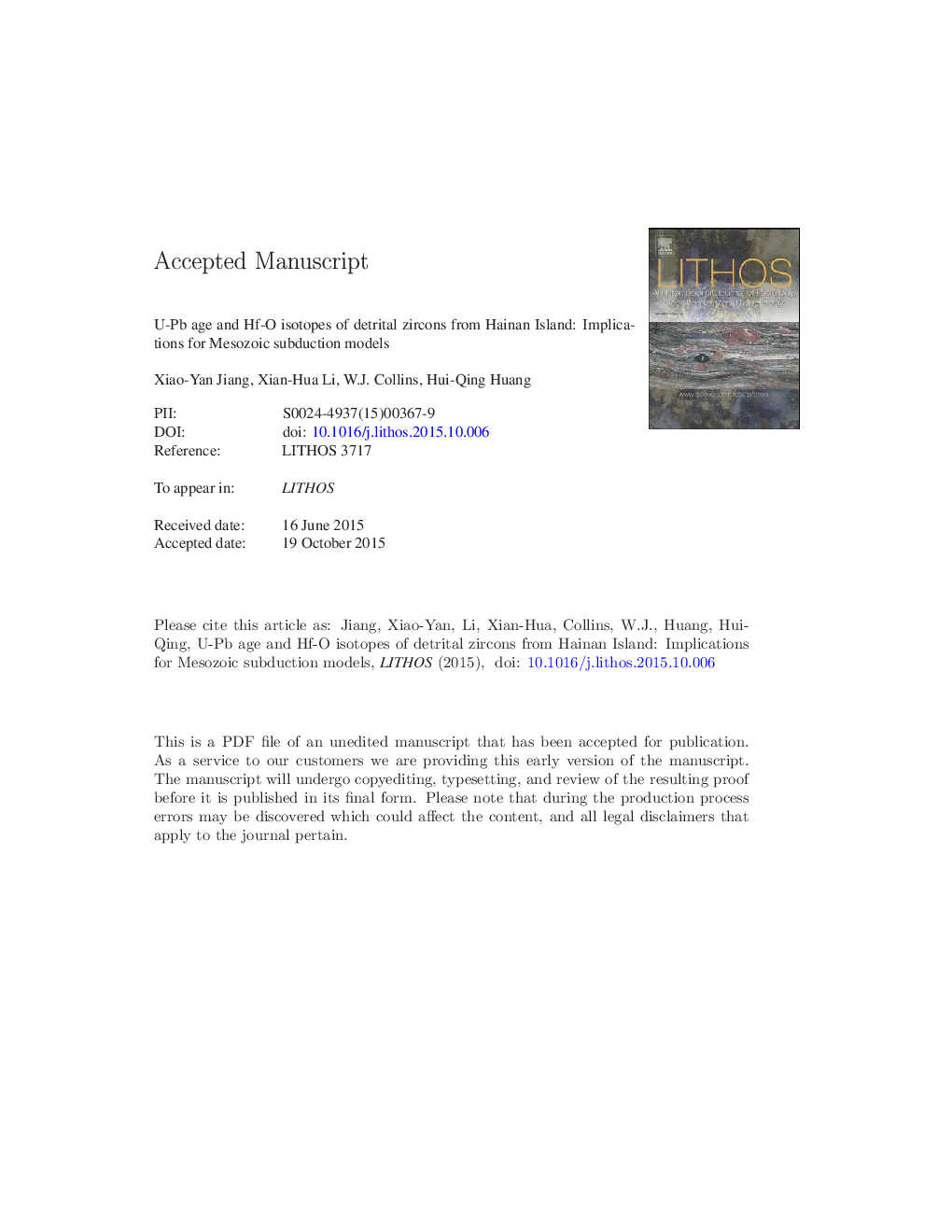| Article ID | Journal | Published Year | Pages | File Type |
|---|---|---|---|---|
| 6440555 | Lithos | 2015 | 44 Pages |
Abstract
In situ Hf and O isotope analyses of the Mesozoic detrital zircons reveal large variations in both εHf(t) (â 21.2 to 10.5) and δ18O (4.4â° to 13.6â°) values. A general negative correlation between them suggests the reworking of old supracrustal materials (average crustal residence age of ca. 2.0 Ga) by juvenile mantle-derived magmas. The progression of increasing εHf(t) and decreasing δ18O values of zircons from the Triassic to the Cretaceous suggests progressive crustal growth during the Mesozoic. The results are consistent with hybridization at an active continental margin. We briefly review tectonic models for the Indosinian orogeny and suggest that the petrologic evidence indicates that Mesozoic magmatism was part of the circum-Pacific accretionary orogens that formed along the continental margin of East Asia no later than ca. 250 Ma and continued at least to the late Cretaceous.
Related Topics
Physical Sciences and Engineering
Earth and Planetary Sciences
Geochemistry and Petrology
Authors
Xiao-Yan Jiang, Xian-Hua Li, W.J. Collins, Hui-Qing Huang,
